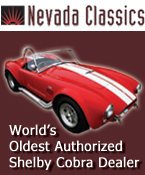Project Summary Log
Starting a blog to document and share certain update projects on my Cobra over time. Hopefully this can provide confidence to anyone else tending to an older Cobra or who is new to, or long in getting back to cars, like me. Of the countless hours of research on every aspect and balancing of many perspectives, hopefully this accumulates some useful perspectives of interest, such as starting thoughts or motivation for your own research, projects and sharing. It is also to report back on and pay respects to the many who have offered advice and shared their experiences on the site over many years, a wealth of knowledge I truly appreciate. It should also provide good entertainment to those who are further down the road and really know what they’re doing!
 Suspension/Brakes/Steering
Suspension/Brakes/Steering
Upon buying my 1985 Everett Morrison I wanted to improve the suspension. The front tires stuck out 3” total and nearly touched the rear of the fender openings. The front sat ‘very’ high and still rubbed too easily on turns and compression. The rear sat ‘very’ low and also rubbed. The sidepipes angled skyward accordingly. The tires rubbed on steering lock to lock. The springs were under rated with shocks warn, allowing significant body lean even at low speeds. The brakes barely stopped the car and were not safe to my standards.
I got suspension advice from the Everett-Morrison group members, who offered helpful pointers and I started down a path. I’m ready to post some project updates. Due to posting size limits, I'll add multiple posts here, including many photos.
To start, below are some photos of overall stance and ride height before and after (so far).
Stance - After

Stance - Before

Tire to wheel well orientation - After

Tire to wheel well orientation - Before

More details to come soon...Brent


